We arrived in Bonaire in that strange, sacred stretch of time between Christmas and New Year’s—when everything feels a little unmoored. What followed was a journey through saltwater, shadows, and subtle transformation. From snorkeling with sea turtles and meeting an octopus near the Salt Pier, to meditating at ancient cave drawings while thieves rifled through our rental truck—this trip gave and took in equal measure. And we wouldn’t have it any other way.

A Threshold in Time
Bonaire, less famous than her sister islands of Curaçao and Aruba, is the undoubted jewel of the three.
We arrived on the island in the most liminal time of year—that quiet, dreamy pause between Christmas miracles and New Year’s resolutions. The space where the calendar hasn’t yet turned, but the spirit has. It’s a moment thick with transition, suspended between what was and what’s about to be. A threshold. And the island met us there, right in that in-between.
Heat, Flamingos, and Small Airport Magic
It was hot—not exactly quiet, but definitely small. All of us mainlanders crammed into a single room at the one and only luggage carousel at Flamingo International, winter felt very far away. December or not, the first thing to greet us was the heat. It clung to the skin like a reminder: you’ve arrived somewhere that doesn’t care what month your calendar says.
The airport’s name is literal, not just a tropical flourish—flamingos really are all over the island. This is one of those airports where you exit the plane by stairway, rolling right up to the aircraft door like it’s 1974. It’s a retro touch I always love—small airport energy that makes you feel like the destination matters more than time. No booming playlist, no crowd control stanchions. Just the bright open sky, the hum of the engines, and the slow shuffle into something that already feels like a story.
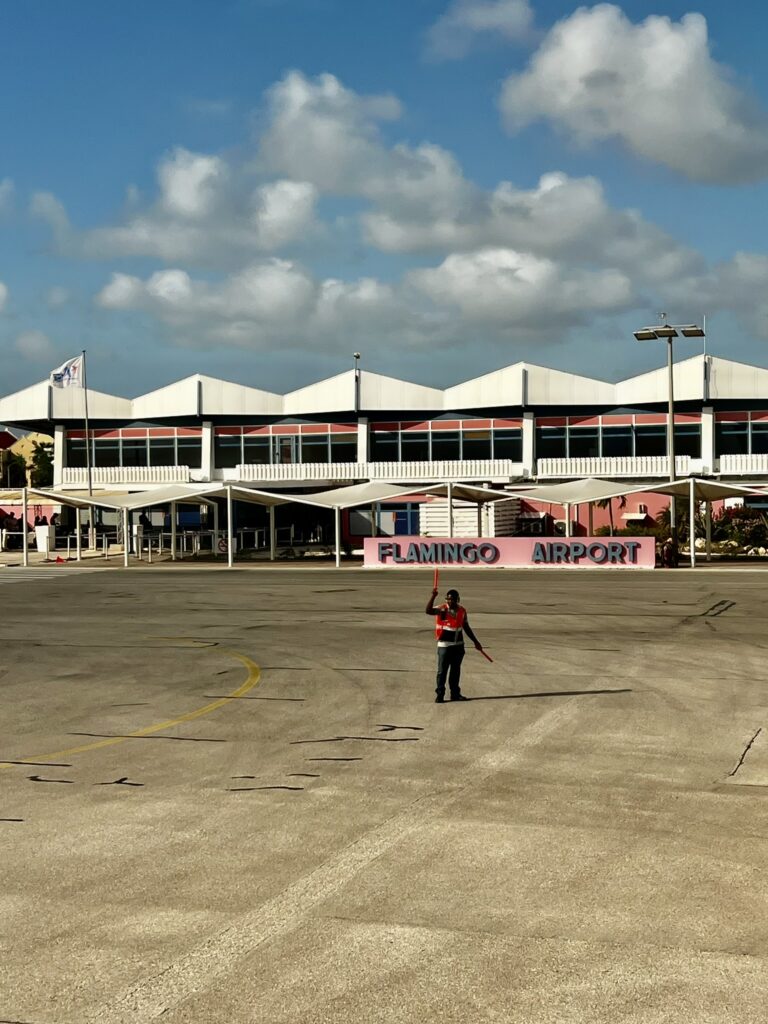
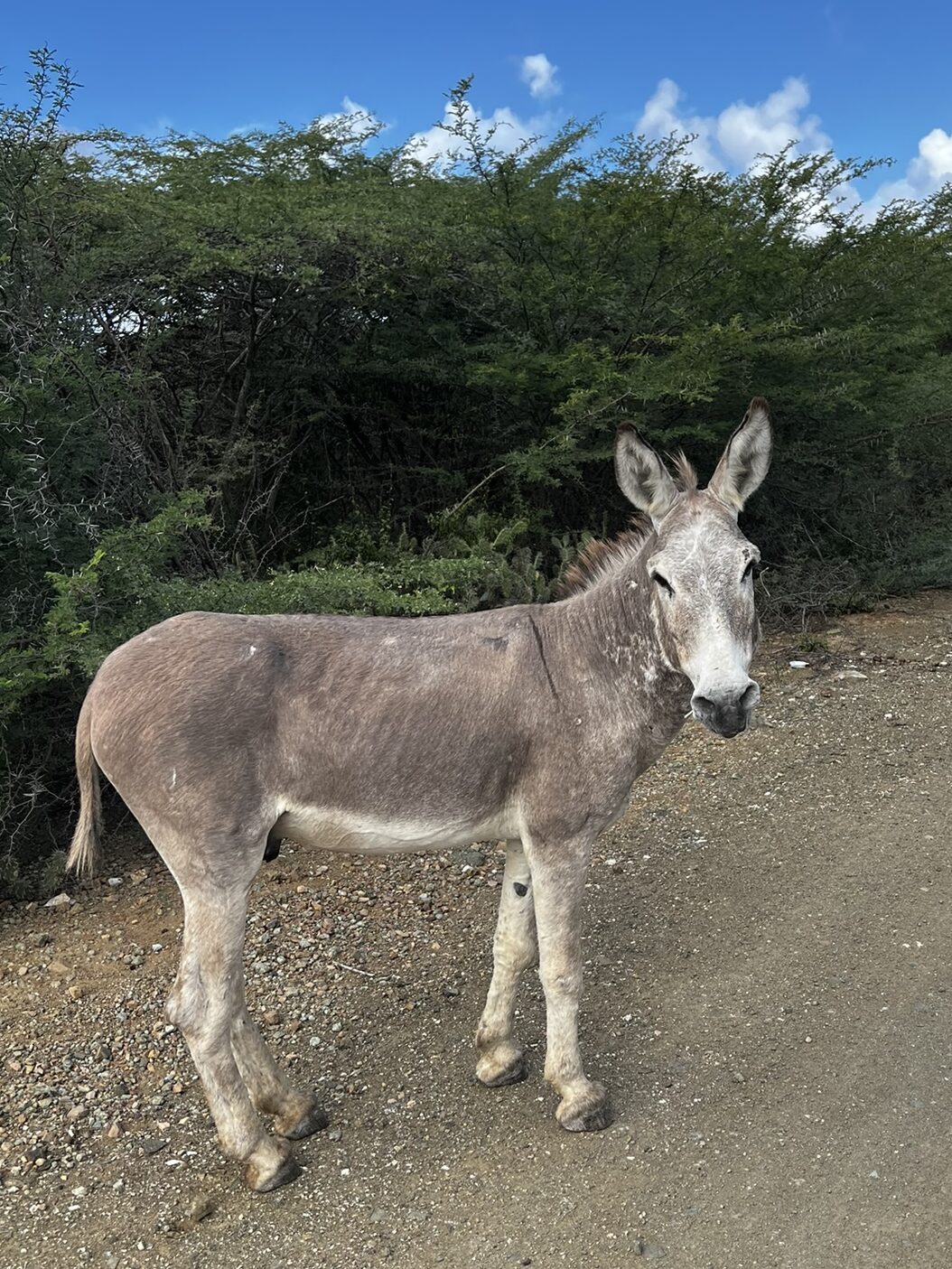
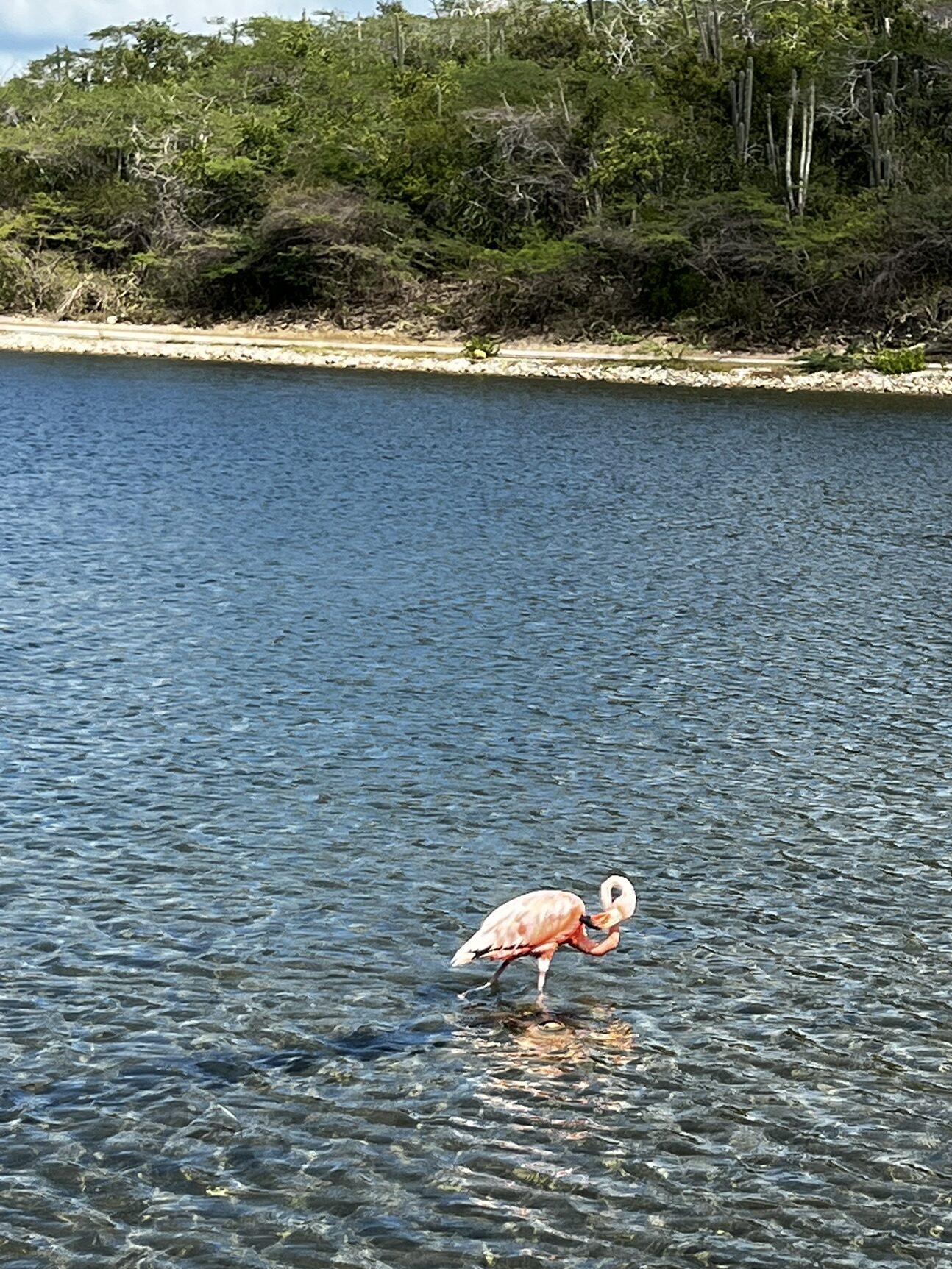
A Resort in Metamorphosis
We stayed at the Van Der Valk Plaza Resort, a place in mid-metamorphosis. The lobby, restaurant, and pool shimmered with modern elegance and opulent amenities, as if they’d been cast from a White Lotus dream. But just past the shine, time broke open. Our oceanfront room whispered in 90s teal and mauve, and the original resort buildings stood weather-worn and wild—abandoned and distant but not empty. The casino remained, tucked inside the ruins and overgrown greenery of the former lobby building, glowing like an indistinct memory that refuses to fade any further.
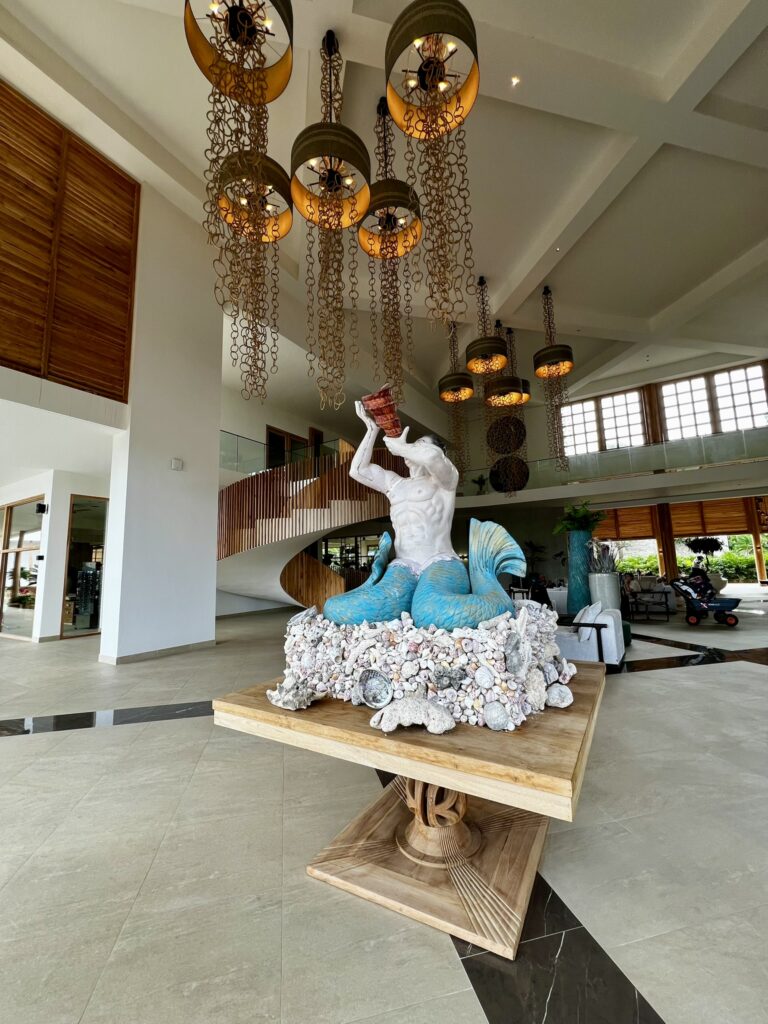
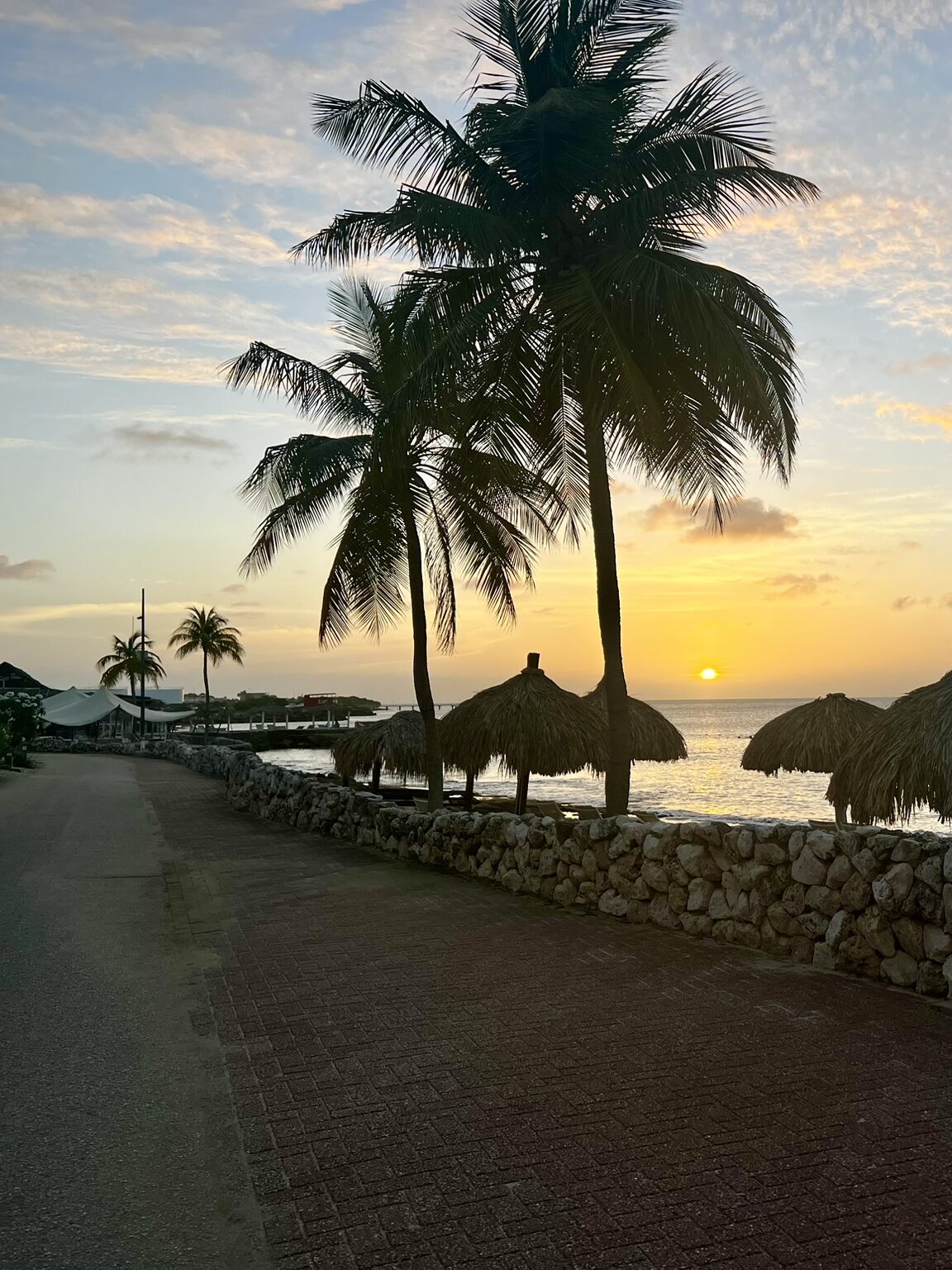
Left, the Plaza Resort lobby. Right, an epic Bonairian sunset and in the distance, the shell of the resort’s original restaurant.
There was beauty in the dissonance. A kind of honesty. Nothing here was pretending to be whole. And we didn’t need it to be. I’d gotten a great deal on the room, booking through Delta Stays and staying in one of the older (but only oceanfront) suites at the resort. The new, modern apartments completed recently look out on the lagoon, and we were there for the lull of the crashing Caribbean Sea. Plus, Scandinavian modernism has never been my vibe.
When the world feels like a dumpster fire, where else can you run but the ocean?
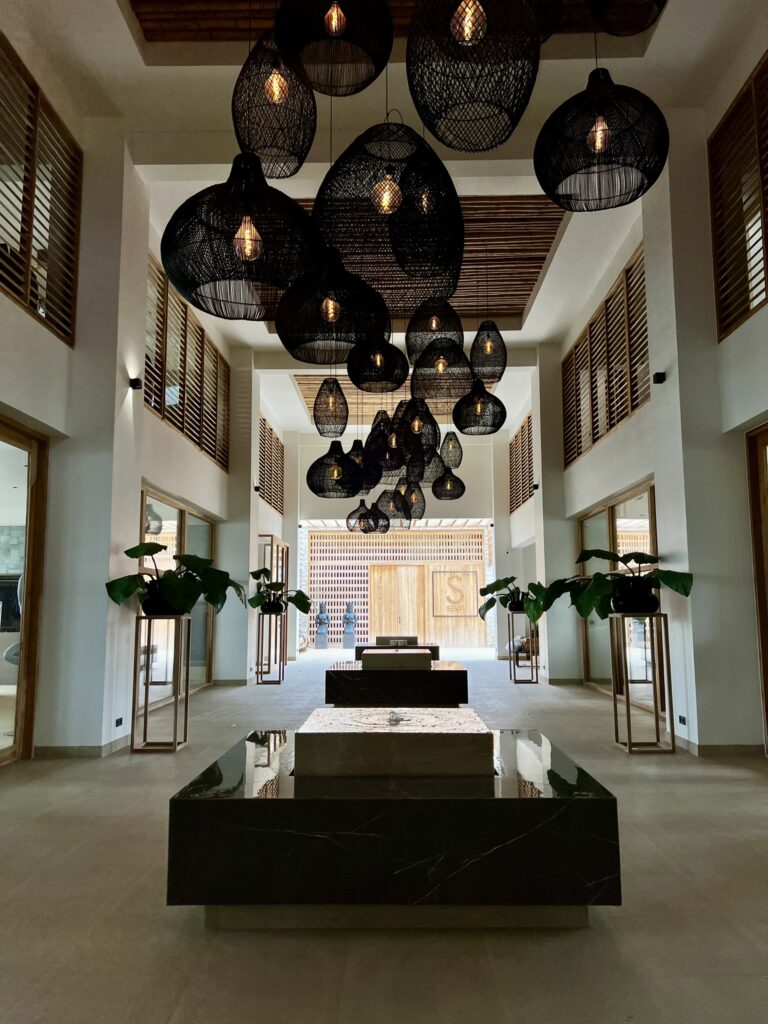
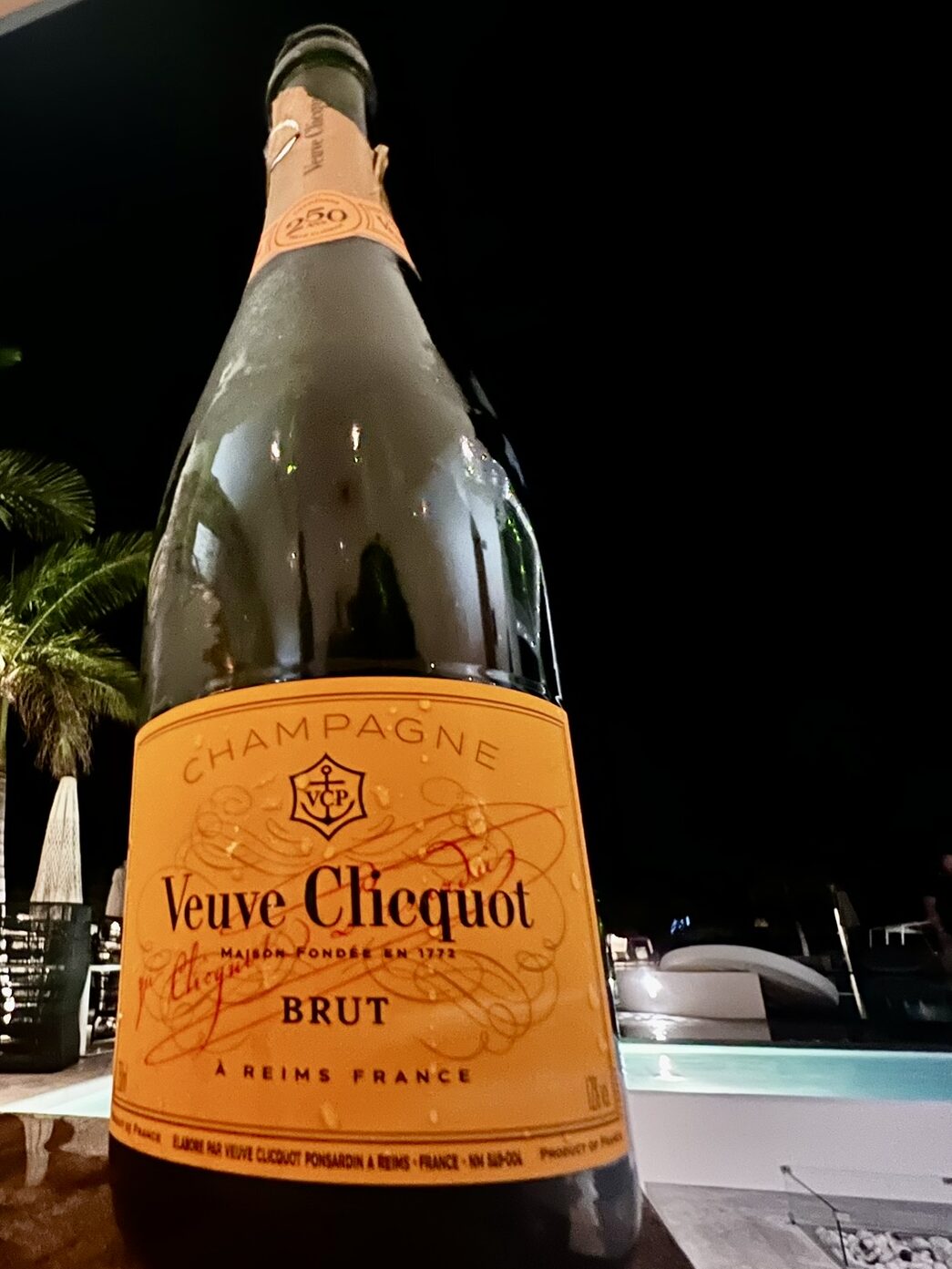
Left, a view from the resort’s lobby towards what will be the spa and boutique. Right, my New Years Eve bottle of Veuve, sweating in the warm evening breeze.
In addition to too much luggage, we carried with us a heavy feeling as we looked ahead to 2025. With so much uncertainty on the horizon, we were in search of something more interesting than polished perfection and much harder to find: the peace one finds in washing waves, relentless and reliable, as sure as the sunrises and sunsets we also chased. When the world feels like a dumpster fire, where else can you run but the ocean?
A Tour, A History, A Reckoning
One of the things J and I have come to love when traveling somewhere new is booking a tour on the first morning. It’s one of my favorite travel tips—it helps you get your bearings, spot the places worth returning to, and learn about the landscape through the eyes of someone who lives there.
In Bonaire, we ended up being the only guests on the tour, which meant the experience felt private—quietly luxurious in that way only unscheduled time with someone else’s expertise can be. Our guide was a robust, gregarious woman with a sun-kissed laugh and platinum-blonde hair. She had lived on the island for years and knew its rhythms well. Informed, certainly—but she spoke of the island’s history with a tone that hovered somewhere between rote and breezy, without much reverence for the weight of the stories she shared.
Bonaire is a Dutch territory, much like Puerto Rico is to the U.S., and as with Puerto Rico, many locals would prefer to run their own island. That tension isn’t always visible to tourists, but it’s certainly there if you care enough to see—or if you’re paying attention when someone tells the truth a little too quickly.
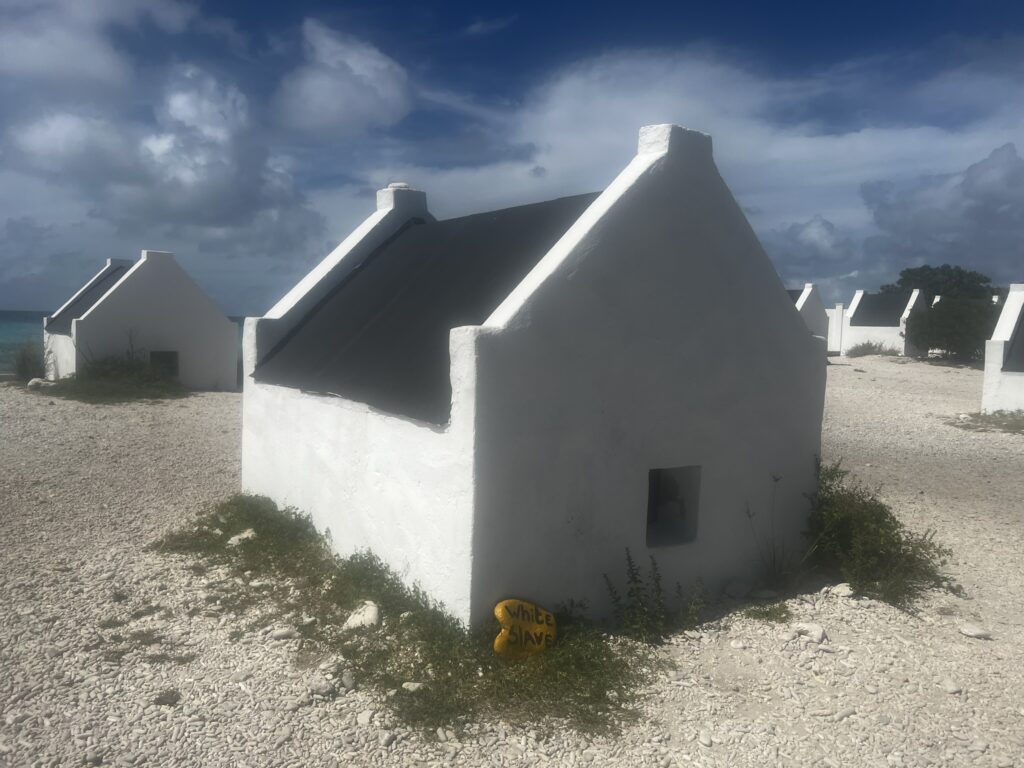
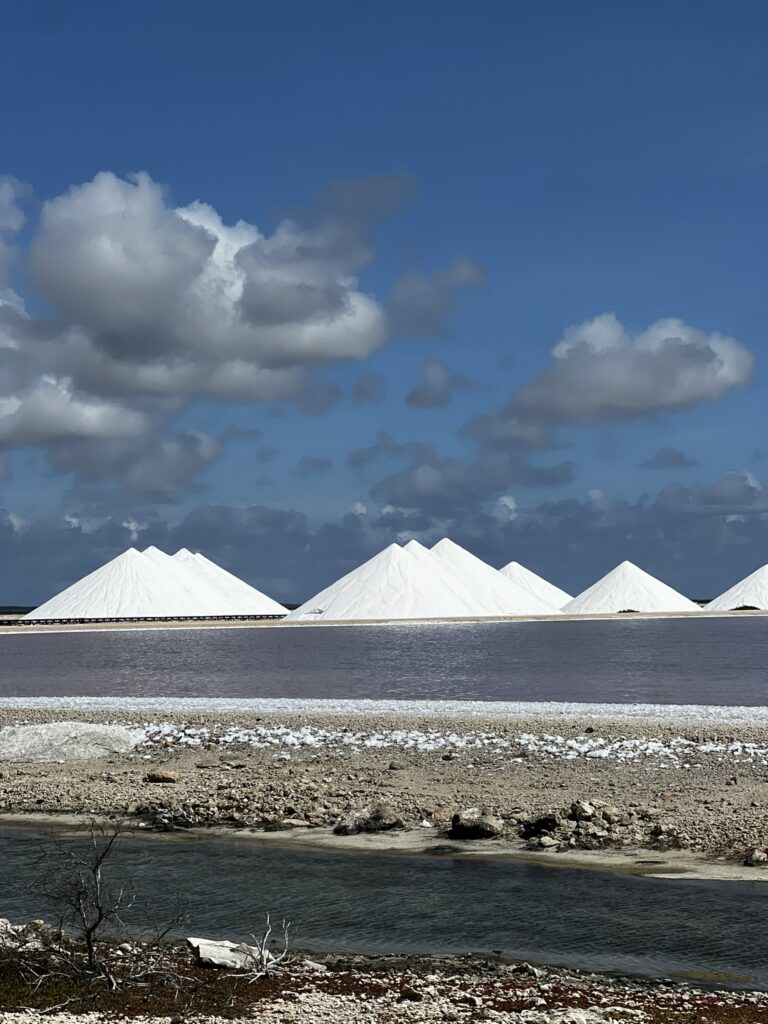
Left, one of the huts for enslaved people brought to island until the late 19th century. Right, giant hills of salt pile up in the distance behind pinkish drying pools.
Our guide drove us past rows of squat white and yellow structures along the coast near the salt flats—remnants of the island’s history of slavery. These huts once housed the enslaved Africans brought here to harvest salt. They’re still standing today, weathered and ghost-thick, resolute against the eroding salt wind and sea water that ate so easily through the flesh of those who once labored by hand to extract the mineral.
And these structures are small. I’m 5’3″, and I had to crouch and twist to step inside. Each hut was meant to house five or six adults. The salt is still harvested on this island. The huts still watch over the shore. The ghosts are still here, just as much (if not more) than they are back home in Atlanta.
Inside one hut, someone had written a plea in English:
“STOP DUTCH SUPREMACY IN BONAIRE.”
No plaque. No museum. Just hope for change scratched into the walls of a history that hasn’t ended yet.
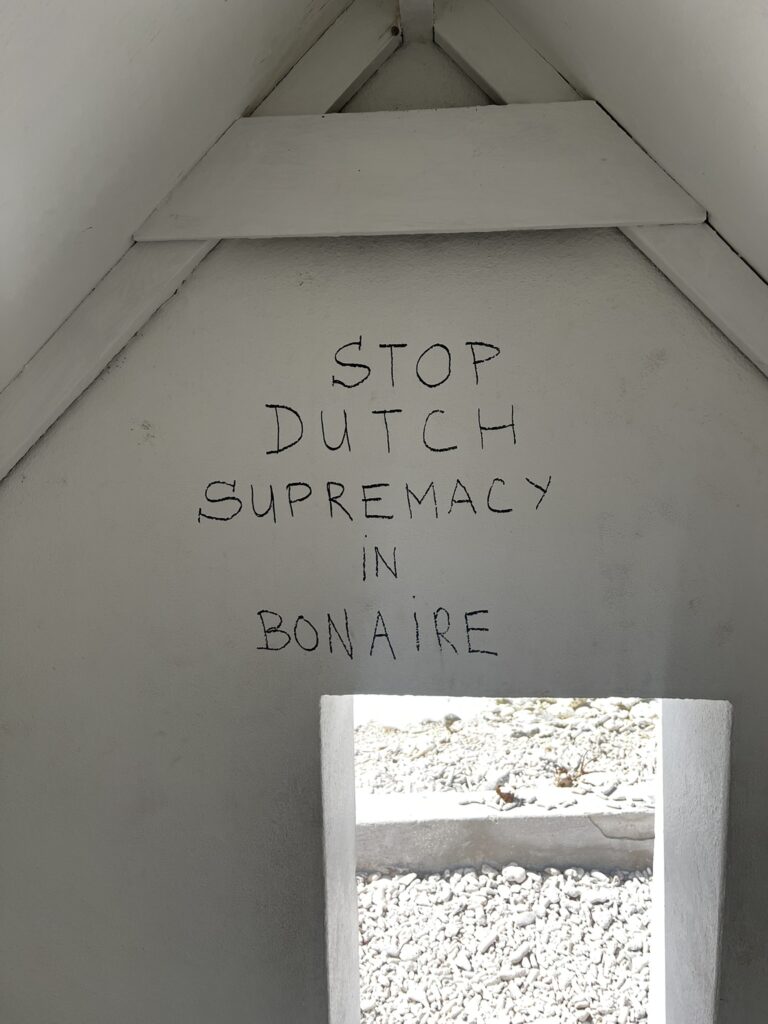
Gifts From the Sea
Some truths are too old, too vast, for quick digestion. So we did what felt most natural—we melted back into the water, drops in an ocean. Salt carries memory, and I couldn’t help but think of the shores of Guyana, not far from Bonaire. The same waters wash them both. My ancestors are out there, humming through coral and current. Alive in the sand. Speaking in a language as old as water.
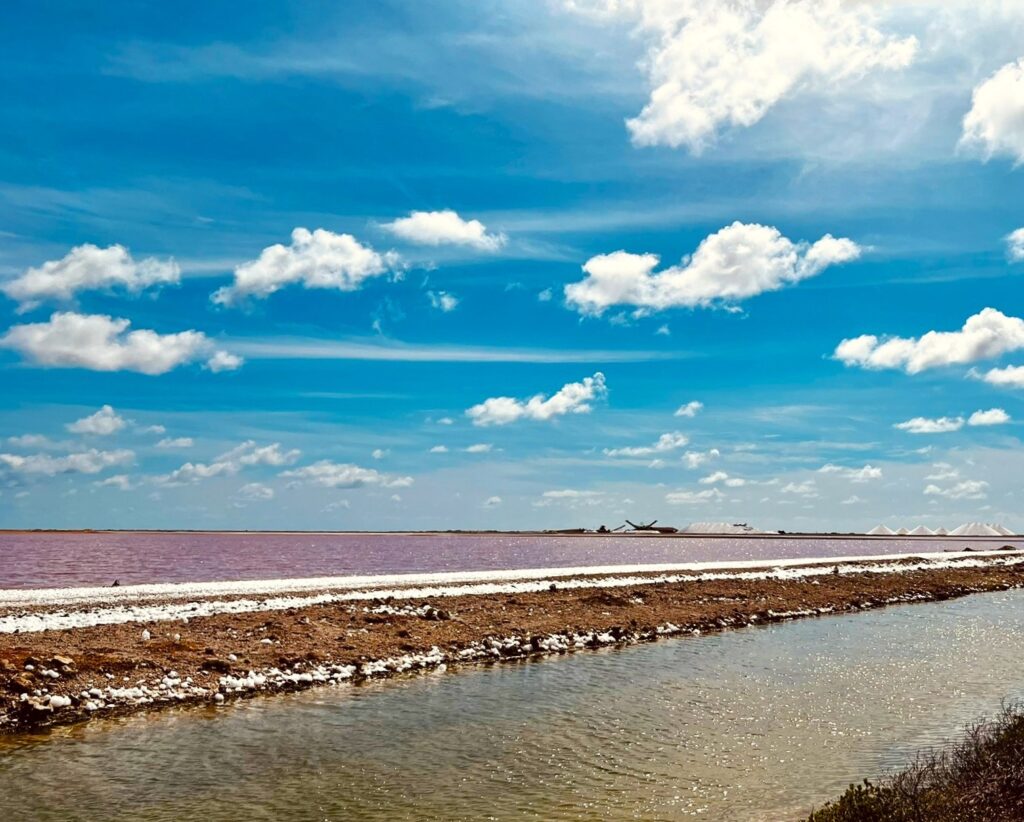

Left, barrier ditches separate the road from the distant salt flats—pink from salt-loving algae. Right, the STINAPA tag for all visitors diving or snorkeling in Bonaire.
At the 1000 Steps dive site, we swam alongside half a dozen young sea turtles. They played in the waves like puppies, nibbling the algae growing from rocks along the shore, completely unbothered by our presence. They were close enough to touch—but of course, we know better than that. (It’s illegal! Don’t be a jerk.) We just floated with them, hearts wide open, marveling at the joy of being near something so innocent and wild and unafraid.
At Larry’s Lair near the Salt Pier, the sea gave us another gift: an octopus. She pulsed out from beneath the coral as if conjured—soft, sinuous, and utterly otherworldly. We watched in silent awe as she shifted colors through the reef and vanished, a brief visitation we were lucky to witness. It felt like a secret blessing, shared just with us.
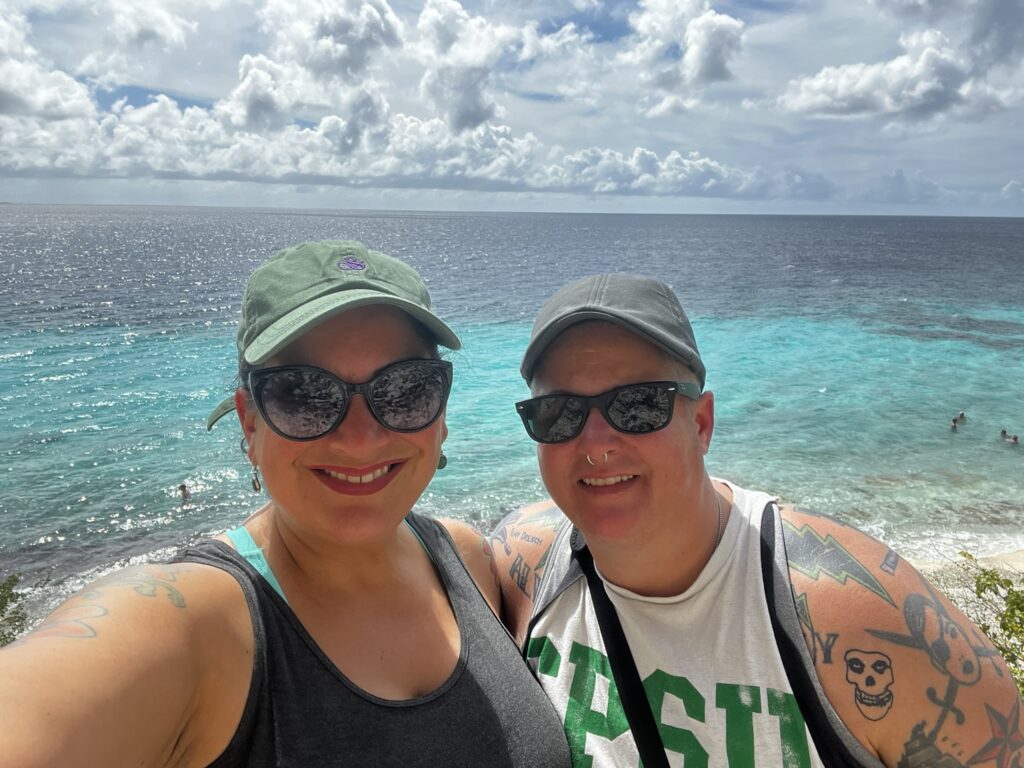
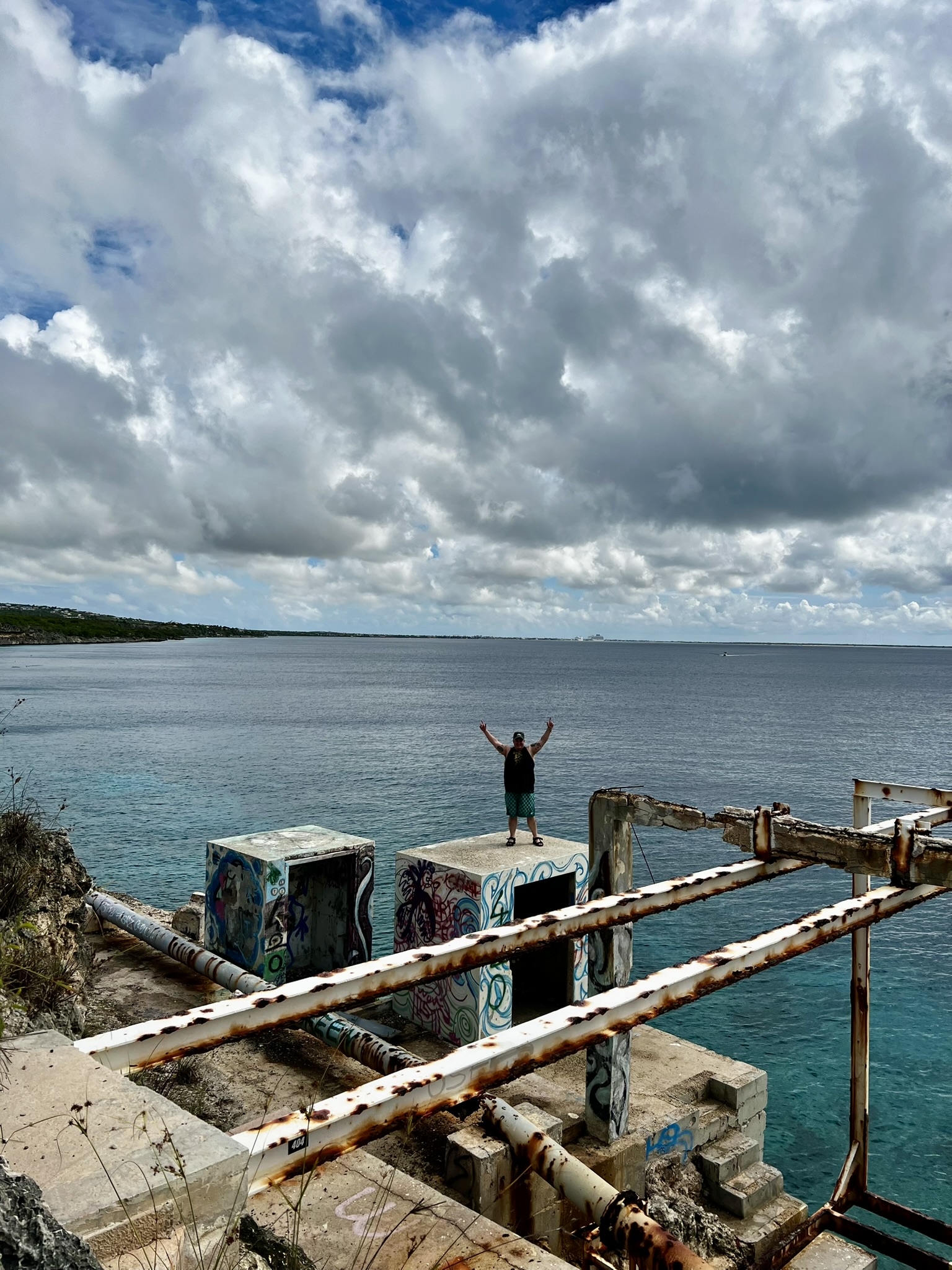
Left, J and I at 1000 Steps dive site. Right, J conquers an old barrel transfer station once used to ship oil off the island.
One night, J went out for a night snorkeling trip. They disappeared into the velvet dark with determination and a diving light while I stayed on land, watching with no small amount of awe and trepidation, excited to hear of what they found in the inky depths. An eel! Bright and vibrant in the dark, mysterious and fearsome, and like many humans on the island, in search of a tasty crab.
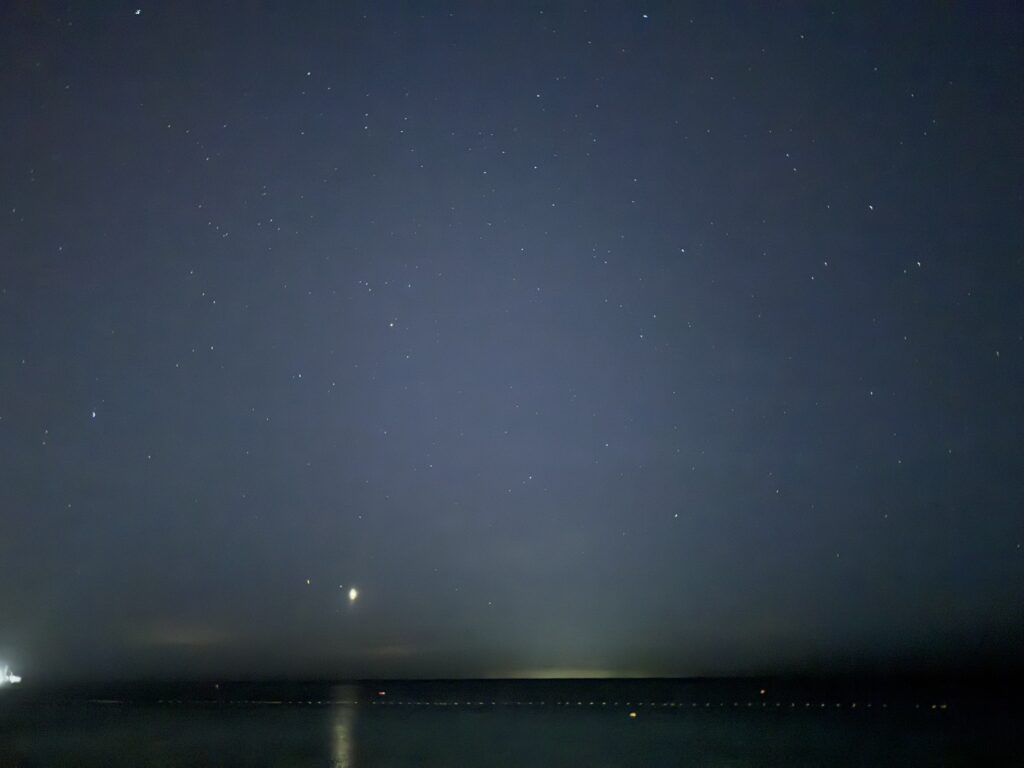
An (Unexpected) Offering at the Caves
But the moment that stayed with me most came when we returned to the caves.
There was something really magical there. We could feel it the first time we visited the ancient cave drawings, and it felt like a place of deep reverence. So we came back with offerings and a bit more time. J and I each found a spot to meditate and be with the ocean in stillness and silence near Boka Onima—one of the island’s most epic places to feel the full power of the ocean around you.
The thieves stole all the cash from our wallets. We didn’t even realize it at first. The realization came slow, preceded by lots of questions of ourselves to be sure we hadn’t left that cash behind at the hotel or something. But no, the cash was gone, somewhere around $100 or so. A small violation, yes—but we’d certainly lost more than that at the casino. The message was the same in both places—don’t come to play if you don’t understand that the house always wins.
And maybe that was the trade. We crossed a threshold and left an offering behind.
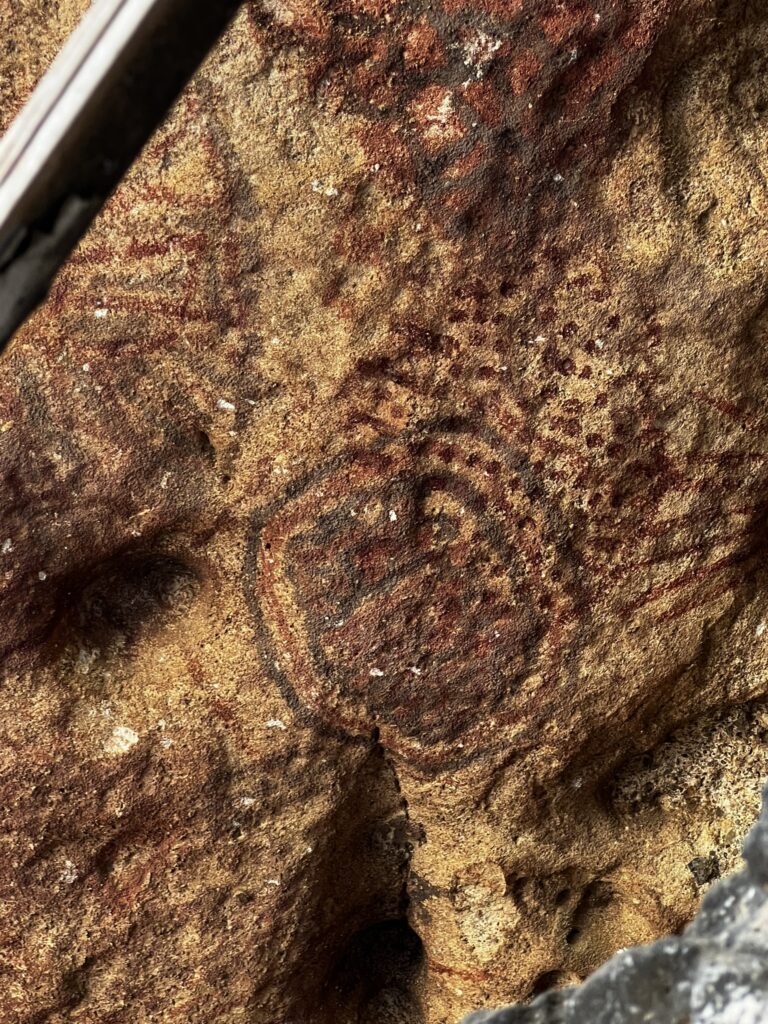
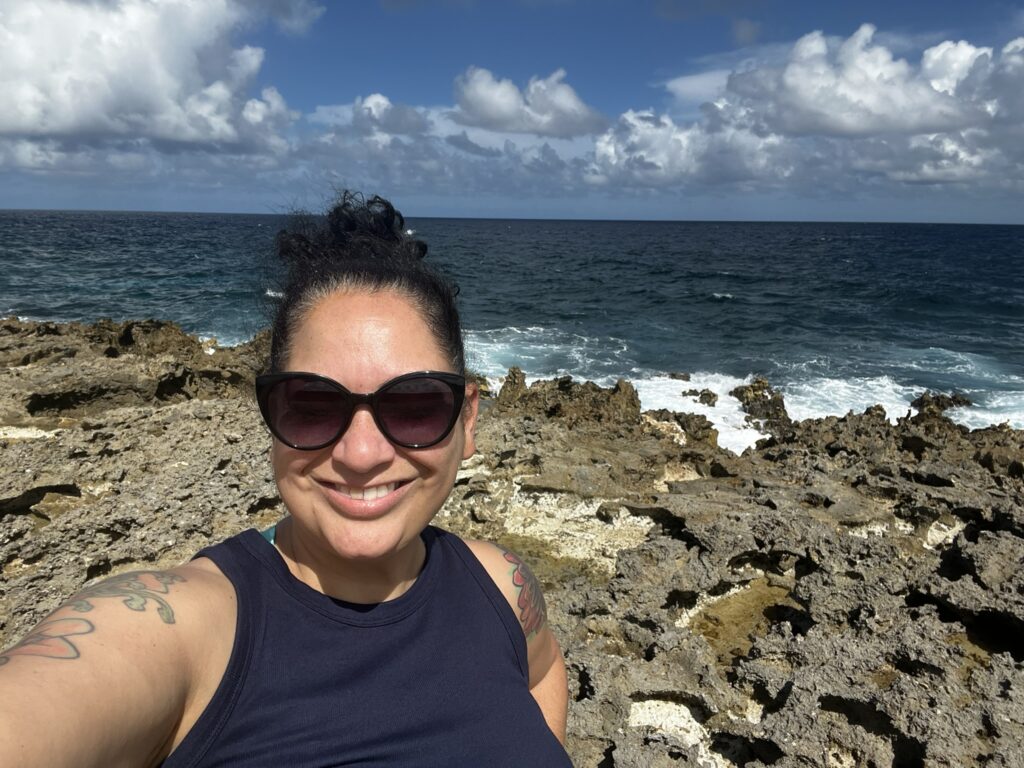
Left, photos of the island’s cave paintings. Right, the landscape and crashing waves near the caves are truly epic (pic taken before I knew we’d been robbed.)
What the Island Took, What the Island Gave
We loved Bonaire.
As avid snorkelers (yes, we’ll get SCUBA-certified one day), there’s no closer paradise. The island’s fierce protection of its ecosystems—onshore and off—is priceless and utterly invaluable. I’m so grateful they share it with us as generously as they do.
We came to Bonaire carrying the weight of the year behind us and the uncertainty of the next one ahead. And the island, in its quiet way, met us there.
It gave us turtles and octopuses.
It gave us silence and power.
It gave us the space to remember what still matters—and what we’re ready to leave behind.
And it took from us, too. Not just the cash from our wallets, but something more abstract and intimate. Something we were ready to lose: a bit of armor, maybe. A bit of distance. We made room in our hearts for the people, the life, the history, and the spirit of the place.
The Plaza Resort itself felt like a stunning chrysalis of half-realized potential. We can’t wait to watch her grow into her next incarnation. And honestly, even if the oceanfront suites stay just as they are—it would be fitting. On Bonaire, the past and present exist all at once.
Before we left, we found trilobite fossils embedded in the rocks just off the pier. J had just returned from night snorkeling—glowing with that kind of quiet joy you only get from doing something bold in the dark. We spotted them together, those tiny prehistoric spirals.
Ancient and casual.
Millions of years old.
Holding up the ground beneath our feet without complaint.
No less precious for their prevalence.
Fittingly hard to photograph, as the waves crashed against them again and again.
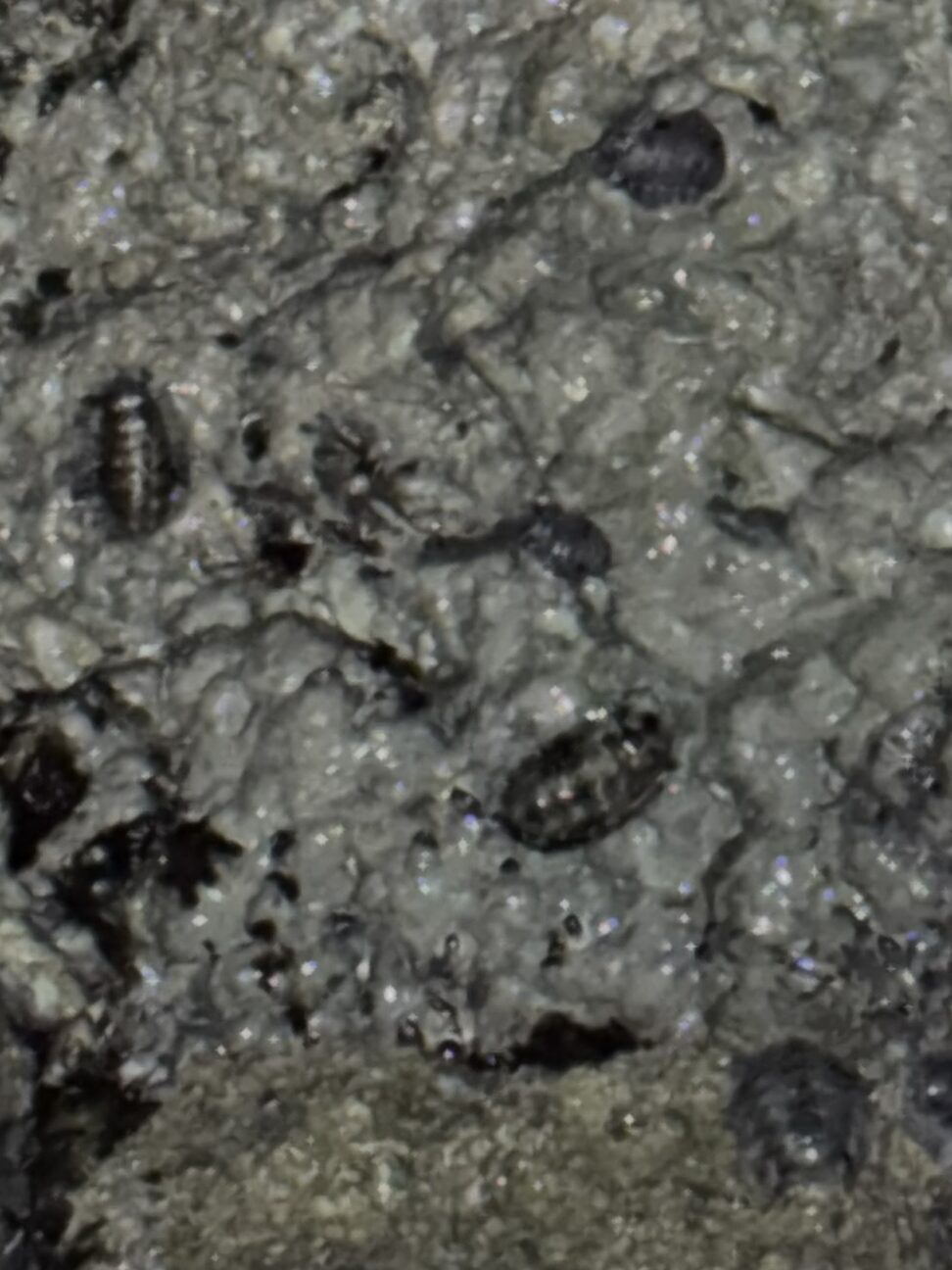
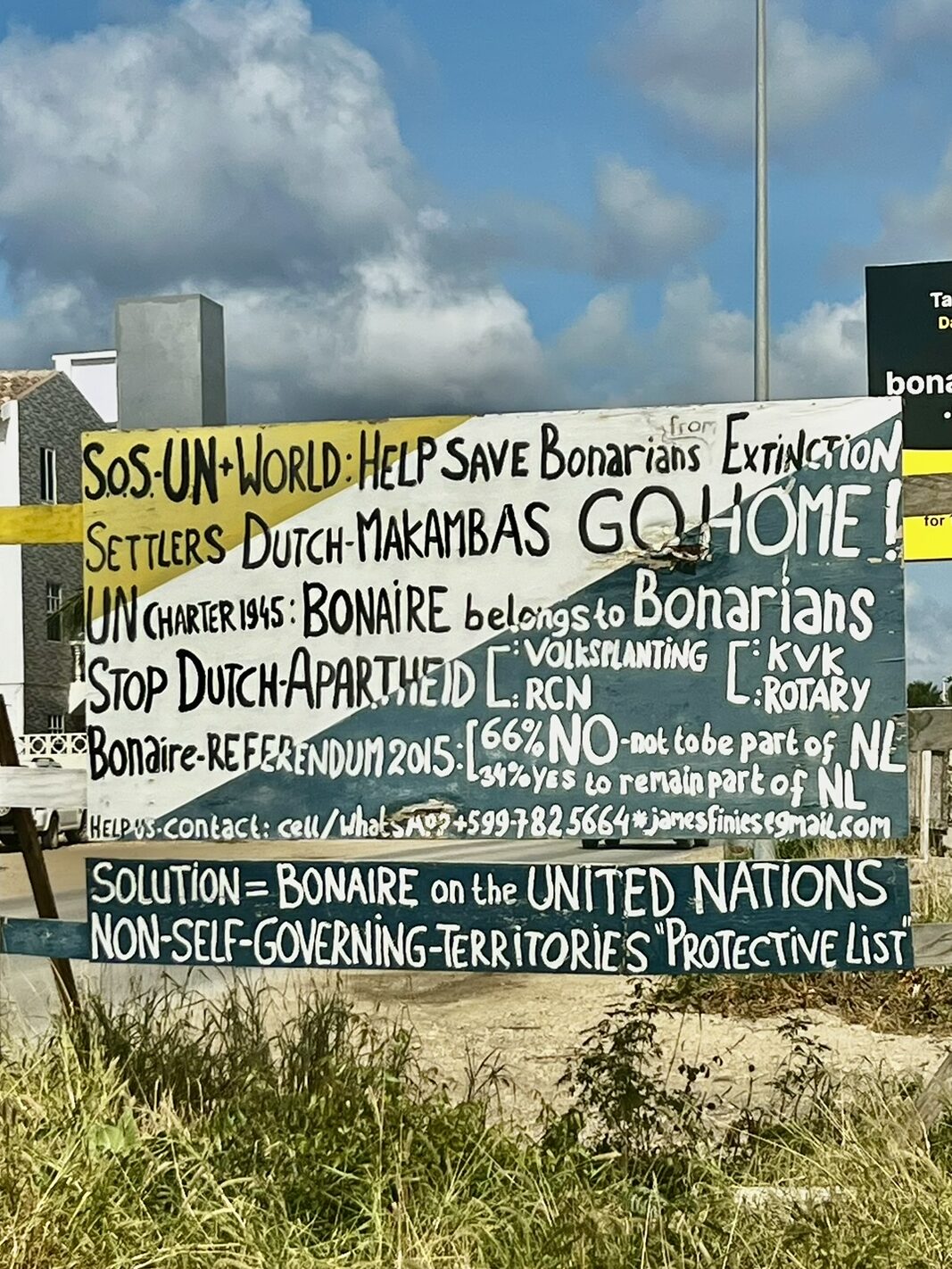
Left, trilobite fossils in the rocks at the resort’s pier. Right, how YOU can help elevate the voices of the Bonairians.
We can’t wait to see what changes and eternal truths the island will reveal to us on our next visit.
Always with love,
La Donna



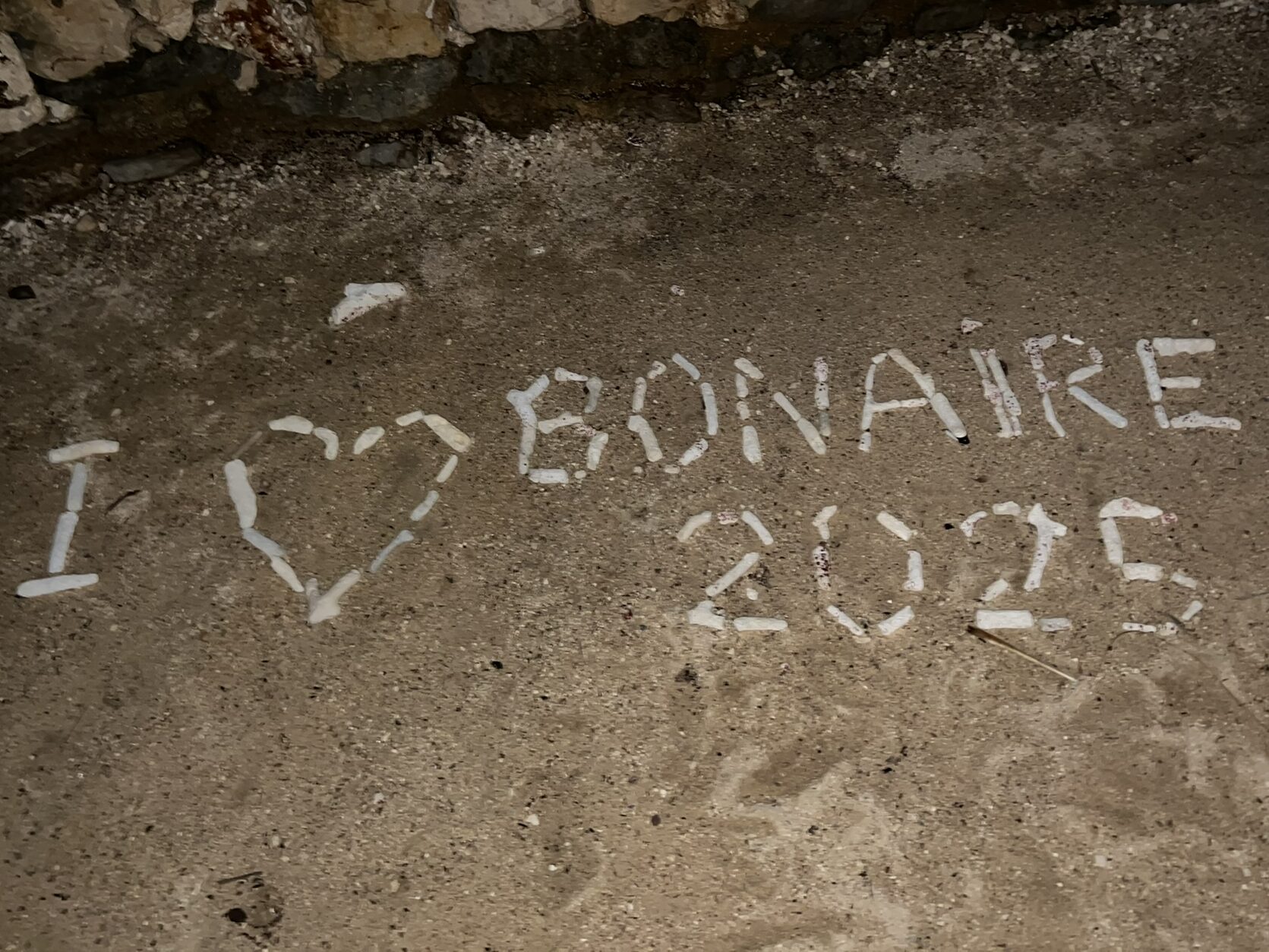
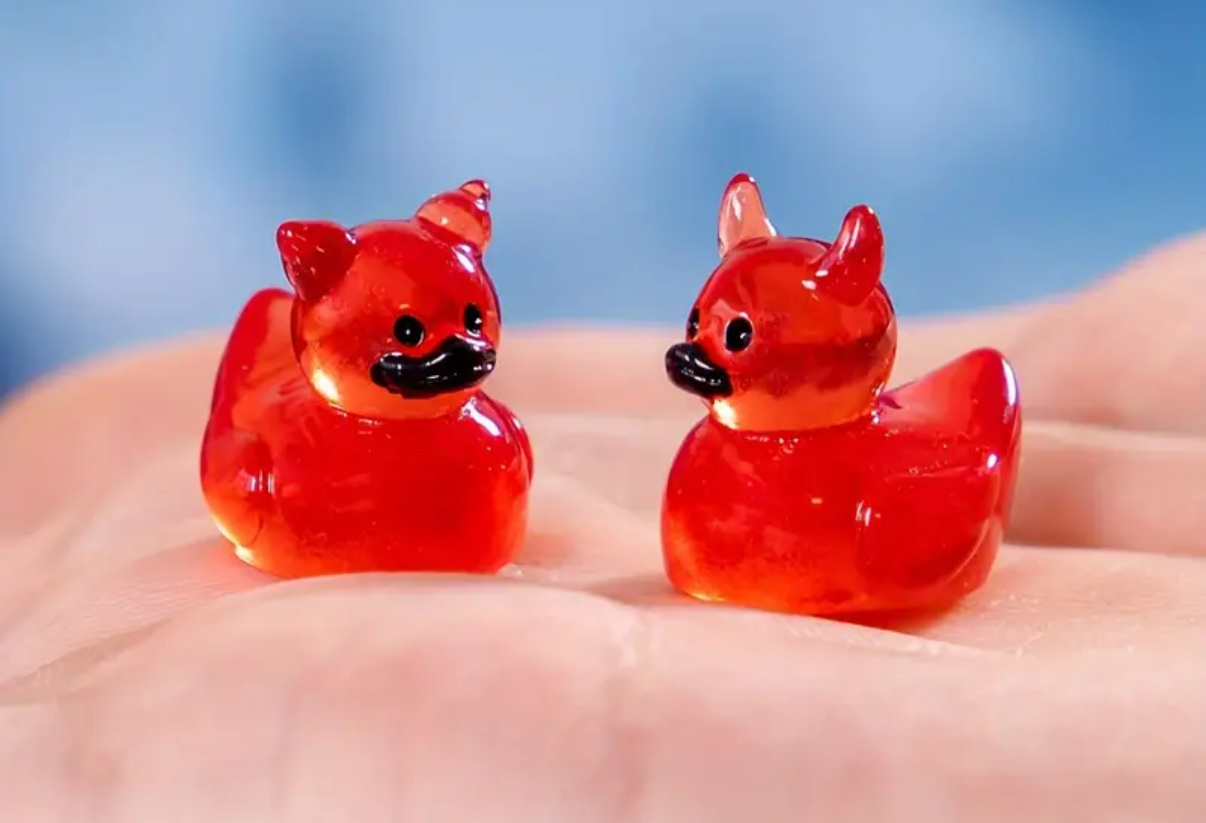
Leave a Reply